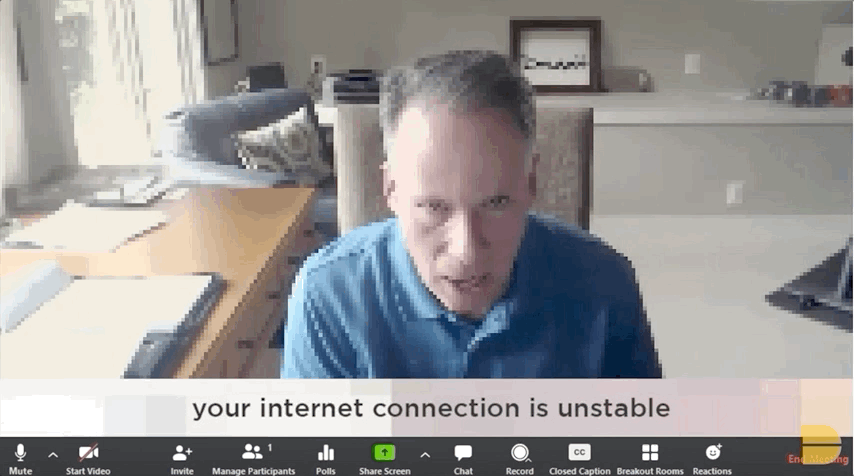5 Easy To Fix Virtual Pitch Mistakes
The COVID-19 pandemic created a new fundraising environment with its own unique challenges. Among them, VCs and startups are forced to interact remotely and make deals without ever shaking hands. This matters because it brings new issues to light that simply were not as relevant to investors before. Many of these new red flags that occur during virtual pitching are easy to fix. In this Dreamit Dose, Healthtech MD Adam Dakin provides 5 simple rules to avoid giving investors the wrong impression when pitching remotely.
Mistake #1 - Showing Up Late
What’s the excuse for being late to a virtual meeting? Spoiler alert: there isn’t one. We hear startups pitch everyday and far too often founders end up joining the meeting late. They apologize, appear frantic or frazzled, and then jump right in having missed the window for small talk. When pitching investors virtually, you don’t want to start the call like Adam does in the shot above. Why? It sends the wrong message. “Investors won’t trust their precious capital to an entrepreneur who can’t manage their time.” So join the call early. Take a couple moments to gather yourself, have your deck ready, and trouble shoot any technical issues ahead of time. Do yourself this favor and you’ll seem calm, cool, and collected when the call starts.
Mistake #2 - Poor Internet Connection
“Dropping out of the video conference room, frozen screens, or choppy audio all create bad vibes.” Technical issues like these distract investors from your pitch. They can take 2-3 minutes of time away and cause you to miss key insight investors need to make more informed decisions. For screening calls, this could consume 10-20% of the meeting time. Avoiding this is easy and preventable - use an Ethernet cable, buy a better router, or upgrade your internet plan. Make sure you have a stable connection.
Mistake #3 - Poor Sound or Video Quality
You know that old saying - if a founder pitches an investor and no one is able to hear the pitch, did the pitch actually happen? Perhaps, but you won’t get a ‘yes’. That’s because Adam sounds like he’s in a fishbowl and looks like a flashback memory. It’s distracting and sends the wrong message if you still haven’t fixed this now 6 months into the pandemic. Since, “Many laptop microphones and cameras are crappy - it’s well worth investing $150 in a decent headset and webcam.” To save time - here’s the most popular and time tested webcam out there. AirPod Pro’s work great or try this affordable headset instead.
Mistake #4 - Unprofessional Setting & Background
“Investors don’t want to hear pitches from founders who look like they’re in the witness protection program.” Adam isn’t trying to hide his identity; he made the mistake of pitching in front of a bright window. So conduct your video calls in a well lit setting. That means no basements, closets, cars, or attics. Before your call, take note if anything in your background is distracting or sends the wrong message - an unmade bed, clutter, or poorly kept living area doesn’t give the impression of someone who’s in control. If you can’t find clean or presentable space, use a virtual background.
Mistake #5 - Unprofessional Appearance
In the moments before the meeting, look in the mirror, and ask yourself, “Do I look like someone who should be trusted with millions of dollars?” To be fair, investor opinions on this vary and we’ve all seen the proverbial hoodie or casual attire of startup founders. But pandemic or not, you need to dress the part. Our advice is to avoid graphic T-shirts, sleeveless muscle shirts, sundresses, or anything that would be considered out of place. Project genuine credibility, trustworthiness, and the air of someone who can handle it.
If the investor has their video camera turned on, turn yours on as well.
Turn off notifications, they’ll distract investors if you’re sharing your screen.
Disconnect and exit the virtual room when the meeting is over.
Watch Adam’s full Dreamit Dose below.
Read Part 1
By Elliot Levy, Healthtech Associate at Dreamit Ventures
Book Office Hours with me.
Learn more about Dreamit Healthtech, a growth-focused program for digital health and medtech startups with revenue, pilots, or early product-market fit.









